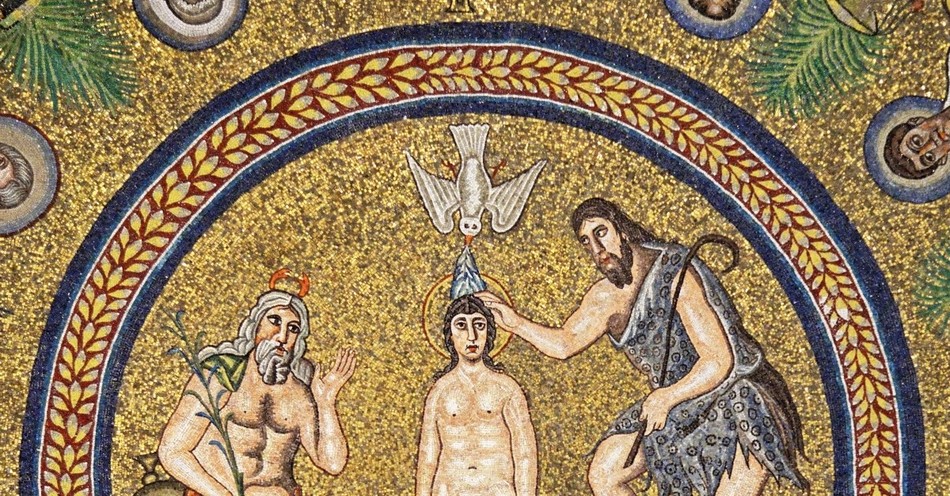Christians have debated many things over the centuries. However, one of their earliest debates, one that some consider the first proper heresy that the church faced, was over an idea called Arianism.
What Is a Heresy?
Heresy is a disagreement on doctrine about a fundamental aspect of the Christian faith. It puts a man-made, self-chosen doctrine in place of the truth. In 2 Peter 2, Peter says, “false prophets brought in destructive heresies, even denying the Master who bought them” (emphasis added).
Heresy is distinct from blasphemy because blasphemy is insulting or showing a lack of reverence for God. Blasphemy is an outright contempt or flippancy toward God. Heresy, meanwhile, might be a genuine attempt to explain a mystery of the faith in a way that makes sense to humans. Most analogies for the Trinity fall into this category. The Trinity is a doctrine that is hard to comprehend from a human point of view. While it is essentially mysterious, there are right ways to understand it and wrong ways to understand it.
Who Is Arianism Named For?
Arianism is named for Arius, a main proponent of the idea that Jesus was God’s first and greatest creation. He was a prominent teacher in Alexandria, Egypt, in the early fourth century. He made his case at the Council of Nicaea in 325 AD, arguably the most important of the early church’s councils. He was condemned as a heretic because his belief undermined the Trinity.
Arianism was one of the main topics at the Council of Nicaea. The council sought to clearly define the Trinity in a way that combatted Arianism and earlier heresies about the Trinity. The definition they came up with was that Jesus was “Very God of Very God,” “Begotten, not made,” and “of one substance with the Father.”
Who Were the Main Proponents and Opponents of Arianism?
Arius was an influential teacher, and his teachings spread to people in high places within the newly Christian Roman Empire. Constantine, for example, drifted toward Arianism later in his life, as did his children. This resulted in the persecution of many influential thinkers and theologians during this period.
One of these theologians was Athanasius, whom the Athanasian Creed is named after. He was exiled five times because his belief in the orthodox doctrine of the Trinity was not in vogue with the political leaders of his day. He often felt as though it was him against the world. His tombstone even bore the Latin inscription Athanasius Contra Mundum (“Athanasius against the world”). He fought for the faith in a time of intense persecution and wrote several influential texts about the doctrine of the Trinity that are still valuable today.
Constantine and his children fell into Arianism because it was easier to understand by human logic. Despite the convenience of the doctrine, believing it will lead a believer to de-emphasize the glory of God the Son, which also impacts the glory that God the Father receives.
What Are the Defining Traits of Arianism?
Arians put the idea of the Father’s perfection and transcendence on such a high pedestal that they formed their entire theology upon it. They said that only God the Father is self-existing, so he must have created God the Son.
Arianism is characterized by an emphasis on the glory of God the Father at the expense of the other members of the Trinity. In this view, Jesus is the Father’s first and greatest creation, instead of being co-equal and co-eternal. Another reason Arianism cannot be part of orthodox Christian doctrine is because it asserts that Jesus and the Father are made of similar but not identical substance. This disagreement was cause for debate that resulted in some confusing but important Greek wordplay.
The orthodox Christian position was that Jesus and the Father were “of One Substance” (Homoousion). The Arian position that Jesus was of a similar substance to the Father (Homoiousion). These similar words confused lay people, who thought this idea didn’t matter. Arians used this to their advantage to draw people away from the truth. This is a tactic of many heretical groups; they convince people that the Christian faith fundamentals aren’t a big deal and things that differ slightly from those fundamentals don’t present a problem.
What Separates Arianism From Orthodox Christian Doctrine?
Orthodox Christian doctrine, as defined in the Athanasian Creed, is that the members of the Trinity have always existed and are equal in glory and majesty. This was one of the main tenets of the Athanasian Creed, the manifesto against all Christological and Trinitarian heresies.
According to Athanasius, the Arian view of God the Son reintroduces polytheism into Christianity—God the Son is a distinct being who is also worshipped. It also undermines the atonement of Christ because only someone truly divine could have reconciled us to God.
Arianism denies Jesus’ eternality and says, “There was a time when the Son was not.” This is not consistent with the doctrine of the Trinity revealed in Scripture. But, at first glance, it seems sensible, which is why it is important to understand why Arianism appealed to people in the early church.
What Made Arianism So Appealing?
Arianism was appealing because it attempted to make the doctrine of the Trinity more rational. It is much easier for humans to understand the Father/son relationship as one where the Father creates the Son. The important thing is to look at what Scripture says. John 1:1, for example, testifies against Arianism. It says that in the beginning, the Word was with God, and the Word was God. The first was implies that the Word eternally existed and was not created by God.
One verse that (upon first reading) seems to give credence to the Arian argument is John 3:16. The word begotten in English conjures images of a Father giving birth to a son. In Greek, however, the word is monogenes. Broken down into its Greek roots, the word is mono—one, and genes—which means kind or class. When combined, a better way to say this is “one-of-a-kind.” Jesus truly is one of a kind. He has been with the Father since the beginning.
Another passage Arians use to say that Jesus was created is Colossians 1:15: “The Son is the image of the invisible God, the firstborn over all creation.” The key word here is “firstborn.” Arians use this word to say that God literally birthed Jesus. In fact, the Greek word for firstborn is also used in Romans 8:29 to show that Jesus is above all believers. Paul is making the same point in this passage: Jesus is preeminent over all things (Colossians 1:18).
Why Should We Know What Arianism Is Today?
One important reason to understand Arianism today is that many cults still hold an Arian view of God. Jehovah’s Witnesses, for example, believe that Jesus is God’s first creation. Mormons also believe that Jesus is important and similar to God but created by God.
Another important reason to understand Arianism is that many of its beliefs are still in the church today. According to the State of Theology survey by Ligonier Ministries, fifty-five percent of those surveyed agreed that “Jesus is the first and greatest being created by God.” This is Arianism’s fundamental teaching. Therefore, most Americans surveyed believe in Arianism despite it being condemned as a heresy almost 1700 years ago. This shows the importance of understanding what is wrong with Arianism and what the trinitarian relationship actually looks like.
More Resources about Arianism
For a short summary of Arianism and its dangers that you can share with your friends, try this audio message by Doug Bookman:
(“Arianism: The First Great Christian Heresy?” by Doug Bookman first appeared on Christianity.com on July 19, 2010)
You may also enjoy this summary of Arianism and an early conflict between Arians and the rest of the early church:
“One of the greatest wars of all times was fought with pens and speeches, councils, ridicule and exile. It was the battle to define the central doctrine of Christianity: who Christ is in relation to God the Father. The battles raged for most of the fourth century.
Arius claimed that Christ was a created being. ‘There is a time when Christ was not,’ he said. This view became known as Arianism. The council of Nicea rejected it. Christ is of the same substance and essence as God the Father; in other words, Christ is God, said the delegates.
Arius had gained a strong following. Although the Emperor Constantine had supported the creed of Nicea while he lived, some of his successors did not. They fell under the spell of Arian advisors. Arians appointed their own bishops throughout the empire and so Arianism maintained a strong footing.
However, there were many voices raised for unity. They felt that the empire could tear itself apart over theology. As crazy as it may sound, theologians tried to work out formulas which would satisfy both sides. Logically, Christ either is truly God who took on the form of a man, or he is a created being. If he is ‘almost God’ or some other in-between being, then he is not God, but a created being. The formulas tried to get around this with vague wording.
One attempt at compromise took place on this day, May 22, 359 at Sirmium in the eastern empire. A council which did not represent the entire church, consisting mostly of a number of Bishops who leaned toward Arianism, issued a creed. While on the surface it condemned Arianism, it objected to the Creed of Nicea for saying that Christ was of the same essence as God the Father. Christ, said this new creed, was begotten of the Father—but how or when we do not know. Jesus is only like God, it said.
However, the writers of the creed made a tactical mistake. In their preface, they stated ‘The Catholic [Universal] Faith was published ... on May 22.’ This opened them to ridicule. The faith had already been around for three centuries. Those who favored the Nicean Creed with its clear statement of Christ’s divinity, heaped ridicule on the creed, nicknaming it the ‘Dated Creed.’ That is the name it goes by to this day.
Pressures for unity were great, starting with the emperor on down. And so churches east and west signed on to the new creed, although some made changes in its wording first. On the whole, the Dated Creed wasn’t much different than the Nicean Creed, except in a few lines. However, the Dated Creed did not stand. Athanasius, Bishop of Alexandria, and other pro-Nicean theologians refused to accept any compromise that made the Son less than equal to God the Father. Later church councils settled the matter once again in favor of the divinity of Christ.
In the end orthodox logic won: As someone has remarked, God the Father could not be eternally a Father unless God the Son were eternally a Son.
Bibliography:
1. Chapman, John. “Semiarians and Semiarianism.” The Catholic Encyclopedia. New York: Robert Appleton, 1914.
2. “Introduction to de Synodis.” https://www.ccel.org/fathers2/NPNF2-04/ Npnf2-04-63.htm
3. Steenberg, M. “A World Full of Arians; A study of the Arian debate and the Trinitarian Controversy from AD 360-380.” https://www.monachos.net/patristics/ arians_360-380.shtml
4. “Various Christologies. Part c. An Attempted Compromise. The ‘Dated Creed,’ 353.” [sic] https://www.bu.edu/religion/courses/ syllabi/rn301/creeds.htm
5. Other internet articles.”
( “Semi-Arians Ridiculed for Their ‘Dated’ Creed” first appeared on Christianity.com on April 28, 2010)
Photo Credit: Arian baptistry in Ravenna, Italty. Ввласенко/Wikimedia Commons.
Ben Reichert works with college students in New Zealand. He graduated from Iowa State in 2019 with degrees in Bioinformatics and Computational Biology, and agronomy. He is passionate about church history, theology, and having people walk with Jesus. When not working or writing you can find him running or hiking in the beautiful New Zealand Bush.




